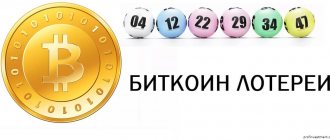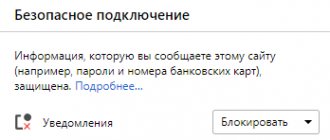STO or Security Token Offering – what is it, what are the main advantages and disadvantages.
The difference between STO and ICO Views: 502
Comments: 0
The modern method of conducting an ICO (initial coin offering) has become quite outdated: initially crude, now it is not at all effective - this is noted by many investors. The traditional offer has been replaced by a new format - STO. Its properties attract investors and at the same time face criticism. In this article, we'll look at what Security Token Offering is, how to work with it, and what to expect.
What is STO
Let's start with the definition. Security Token Offering or STO is a security token offering campaign. In such a system, the token functions as an investment instrument and is de jure considered a security.
Types of securities
The program attracts a lot of attention from the public for the reason that security tokens carry a certain material value: they can be guaranteed to receive dividends or be exchanged. The strategy eliminates the risks of fraud. The purpose of such events is to attract investment to the project. The organizers create their own investment token, offer to purchase it for a certain amount, and the collected funds are used to refine the product. In STO, great emphasis is placed on jurisdictional compliance - it is no secret that this form of doing business raises many questions from the point of view of the current legislation of different countries.
What you need to know about Security Token Offering (STO)
In a general sense, tokens represent a kind of value on a specific platform; they show that their owners have access to something that is not available to those who do not have such tokens. However, not all tokens are created equally because not all tokens have the same purpose. Therefore, investors and financial experts classify tokens and distinguish their different types. One of these types is security tokens. Tokens are acquired through purchases from interested investors in a process known as a token offering, and in the case of security tokens, this process is called a security token offering ( STO - Security Token Offering ).
An investor must know the basic principles of token categorization and understand what exactly makes certain tokens security tokens, as token offerings do not cross legal boundaries and definitions. Understanding the principles of security token offerings will help an investor know their rights and responsibilities, as well as the responsibilities of platform operators.
What is a security token offering?
An STO is an offering of a token, which by its type is officially recognized as a security token and must perform its functions. In the case of a security token offering, the ICO campaign will be called STO (from the English security coin offering - offering a security token). Since the tokens purchased during such a campaign act as securities whose owners can profit and exchange them for other things of value, it is not surprising that STOs are attracting a lot of attention.
What happens during STO
As with the issuance of ordinary securities, an STO must comply with certain laws. These laws protect investors from some of the risks associated with early investments.
Unlike ICOs, STO campaigns are not necessarily carried out at the initial stage of platform formation; they can be organized later if the team wants to raise capital. With this method of raising capital, the token offered and its operation are subject to the laws of the Securities Commission (SEC). This impinges on decentralization when raising capital through cryptocurrencies.
In general, during this process, some form of money or asset is sold to purchase tokens, which entitle investors to some form of profit in the future if the price rises, and also make the platform owners liable for each security token sold during the STO .
It is also important to know what exactly can make a token a security in the eyes of the SEC.
Distinctive features of security tokens
Many investors have noted the growing popularity of security tokens compared to utility tokens. By definition, tokens of the first type meet the criteria for securities according to the Howey test.
Sometimes it is not easy to clearly identify the criteria that make a token a security. This is because individual state laws may differ from federal ones for the classification of tokens. This situation is caused by investment control legislation. However, the Howey test identifies the following criteria for securities:
- The token must represent an investment of money or assets.
- Investments must be made into a common enterprise.
- There should be an expectation of profit from the work done.
To be considered a security, a token must meet these three criteria.
Why Crypto Enthusiasts Are Skeptical About STOs
Given the specifics of STO, it is not surprising why some crypto enthusiasts are not very supportive of this idea and the laws that entail restrictions. This is due to the fact that one of the main advantages of cryptocurrencies is that they operate on a decentralized blockchain platform, as well as the anonymity they offer investors.
Some in the cryptocurrency community fear that this value of cryptocurrencies will be lost after the SEC intervenes. However, STOs remain a valuable and reliable alternative due to their high level of investment security. This is very encouraging news for both investors and smart contract developers.
Advantages of STO for investors:
For investors, the participation of the SEC eliminates the concerns that often arose during the initial stages of ICO campaigns. SEC securities laws ensure that investors receive a return on their investment, which means that a person cannot simply disappear from the cryptocurrency space or stop sharing profits if they do not want to face the SEC in a lawsuit. Since token creators are required by law to keep their word and allocate an agreed portion of profits to token holders, investors feel more confident when participating in an STO. After all, the very essence of investing involves making a profit.
Benefits of STO for cryptocurrency creators:
When issuing tokens during an STO campaign, cryptocurrency creators may worry about the SEC's excessive interference in their business, but the benefits seem to outweigh any concerns. This is confirmed by the growing number of STOs recently. The point of issuing a token is to raise capital, and the more investors trust the platform, the more likely they are to invest their money in it. Therefore, achieving target capitalization and team goals is easier with an STO than with an ICO.
In conclusion, STOs are becoming increasingly popular due to the benefits they offer to investors and token creators. This trend is gaining momentum and has already led to the transformation of utility tokens into security tokens, which makes it easier for token creators to achieve their goals and therefore ensures business growth. STO campaigns contribute to the development of cryptocurrencies and can attract even more interested people to this area.
ICO problems that STO must solve
ICO is a preliminary coin offering campaign during which the project developer offers his tokens to the investor to raise funds. In the last couple of years, this industry has become extremely developed and popular, but at least three problems have immediately emerged:
- Fraud
- Non-viability
- Uncertain legal status.
Fraud
Projects appear every day that aim to profit from gullible investors - they are excellent at ingratiating themselves with trust and getting money. There are cases when the organizers of pyramids managed to collect from 200 thousand to 1 million dollars in six months to a year of their activity - it is simply impossible to return what was invested in such a scheme. So far, all methods of suppressing criminal activity in the industry, in particular, the work of the SEC, are not as effective as we would like. It’s easy for scammers to work: just write a white paper and invest in marketing.
Non-viability
After the developers assessed the profitability and potential of the industry, the active creation and reproduction of projects began: the market is crowded with blockchain startups. At the same time, 60% of them simply do not live to see the start of actual development (loss of audience interest, lack of funding) - and this is a risk for the investor himself. By buying an organizer token, you get the illusory opportunity to use it in a ready-made platform and nothing more - you won’t be able to sell or exchange it in any way, and you won’t be able to get your money back.
Uncertainty of legal status.
The abundance of pyramids and other fraudulent schemes attracts the attention of financial regulators, which is why regulations and requirements for the industry are constantly becoming stricter. The nature of the tokens themselves remains unclear - whether they are securities or not: for each project this is decided individually through filing an application, which takes time and takes effort. STO offers to solve the listed problems in one fell swoop. Material confirmation of tokens will immediately weed out scammers and unscrupulous developers, and it will also provide investors with the security of their savings in the event of a project failure. As for the legislative aspect, everything is clear here - behind the security tokens there is a completely transparent and understandable essence. They are securities and are subject to financial regulation.
Differences between STO and ICO
Let's dot the i's. The main instrument of an initial coin offering is the coins themselves, or tokens. Regular, traditional coins do not give the owner absolutely any rights and material benefits - they can only be used to purchase the company’s product when it is ready (if any). Assets in an STO are fundamentally different: they give the investor the right to own a material asset. The smart contract that manages the tokens fully automates the process, making it secure and traceable. Moreover, the token also performs the function of a security - by organizing the collection of funds for the development of the project, the developer actually arranges an IPO in a modernized form. It is also important that STO is easier to regulate and make it safe for the investor; the risk of legal problems and controversial issues is minimized. There is no point in criticizing ICOs too much: this format is full of advantages for small investors, amateurs who do not invest too large sums. It is more convenient for them to remain anonymous and refuse legal guarantees.
STO regulation
The SEC, the financial regulator in the United States, became the basis for regulating ICOs and cryptocurrencies in general. The Commission constantly develops norms, requirements and acts that influence the future of the industry. Thus, it is the SEC that determines the criteria by which a token is or is not classified as a security. For this purpose, a special algorithm was selected that involves answering several questions like:
- Has the investor invested?
- Does the investor count on dividends?
- The investor receives profit from other clients and the like.
If a coin is assigned the status of a security, this imposes certain restrictions on its functioning.
So:
- All securities must comply with country regulations, and investors must have a certain level of accreditation;
- The security cannot be resold within 12 months after purchase;
- A non-accredited investor may purchase a security upon filing a general solicitation for up to $50 million;
- The security must be registered.
Since the main concept of STO as an idea is to follow the laws, all the listed norms will certainly be fully respected, which has both positive and negative consequences. Perhaps it is this factor that will prevent the format from becoming a new trend in the industry.
Who can participate in the Security Token Offering
Let's move on to the not so positive news. The SEC has already begun developing requirements for Security Tokens, and there is an entire section dedicated to investors.
Among them:
- An investor can be a legal entity (company), all of whose founders are accredited investors;
- The investor's annual income must be at least $200,000 over the last two to three years with a guarantee of its subsequent stability. If we are talking about a married couple, then at least $300,000 for two. As an alternative – assets worth $1 million or more, excluding the value of real estate;
- An organization with assets worth $5 million or more (fund) can become an investor;
If a potential investor meets one of the points, he will not have any problems. Otherwise, participation in the auction becomes impossible. The listed norms cannot yet be called the only correct approved option - they can be either softened or tightened.
What is STO (Security Token Offering)? How is STO different from ICO?
As the attitude of regulators towards tokens and ICOs has become increasingly strict and strict in recent years, attracting investments through Security Token Offering (STO) is a logical next step for the industry as a whole and determines the vector of its development towards a more civilized and transparent market. The analytical department of Zichain examined the features of the new tool and found out what stands in the way of its mass introduction to the market.
A Security Token Offering involves issuing digital assets in full compliance with securities laws, but does that mean it's better than an Initial Coin Offering (ICO) in every way? The answer is not as clear-cut as it might seem at first glance.
On the one hand, the new instrument has a number of key advantages, providing a higher degree of protection of investor rights and, at the same time, reducing regulatory risks for issuers. On the other hand, it involves much higher costs for the issuer, since an STO is a type of private placement of securities, while an ICO is essentially just a type of crowdfunding. STOs are also aimed at a different audience, since only professional investors can participate in such placements. Thus, STO and ICO are rather two different mechanisms for attracting investments, intended for different situations.
The ICO market experienced a real boom in 2020, but lost its former dynamism in the second half of 2020. Thus, the total volume of investments attracted through ICOs amounted to more than $17 billion in the first half of the year, but only about $5 billion in July-November. However, even if STOs dominate the market in the coming years, ICOs as a funding model are unlikely to disappear completely. Due to high costs, STOs are primarily suitable for B2B companies and startups at later stages of development (Round A and beyond).
In the near future, ICOs will likely continue to be used by pre-seed and seed stage projects, as well as companies with a loyal community that rely on investment from their user base rather than from institutional investors. If the market reaches the stage of development at which STO aggregators and package offers for organizing such placements appear, they will likely become popular even among small companies and startups in the early stages of attracting investments.
How will the Security Token issuance procedure be carried out and what will be required for this? First, the issuer needs to understand the details of the legislation and regulatory requirements in the chosen jurisdiction. For example, if a token is planned to be issued in the US market, but the issuer does not understand anything about the SEC regulatory framework and is unable to distinguish Regulation S from Regulation A or Rule 506(b), he simply needs to seek help from a highly qualified lawyer and securities placement consultant papers The choice between the above exceptions to the securities registration requirement will determine its legal obligations and therefore form the basis of its investment attraction strategy.
Second, issuers must be prepared for much higher legal and compliance costs. The KYC/AML procedure for this type of placement will consist of several stages. The fact is that not a single accredited exchange can refuse to carry out the KYC/AML procedure, but at the same time, due diligence requirements are also imposed on the issuer. For example, the SEC requires that every investor be verified as an “accredited investor.” Such a complex procedure will unpleasantly surprise those accustomed to the carefree approach of the ICO boom era.
Finally, it should not be forgotten that an STO will require a different marketing strategy than that used to promote an ICO. The latter are close to crowdfunding and rely on community building and activity on social networks. Only professional investors will be able to take part in the STO - this is a much more sophisticated audience that is more difficult to impress. Promoting a product and business model among professional investors will require much more effort and a large marketing budget.
The future widespread adoption of the STO model seems predetermined, but there may still be a number of obstacles along the way. Much will depend on the actions of regulators and their approval of the new investment attraction scheme. The Securities and Exchange Commission currently leads the way in regulating digital assets—it is certain that most national regulators will emulate the SEC's policies on major issues in this area in the coming months.
Another pressing issue is the level of liquidity in the nascent STO market. So far, there are only a small number of licensed trading platforms that allow the listing of such instruments. Developing market infrastructure to support higher levels of liquidity may take a long time. But, of course, this also depends to some extent on the point of view - for example, tokens are less liquid than traditional securities, but at the same time they are significantly superior to venture investments in this regard. It is logical to expect that venture funds will be among the first adopters of STO - both as investors and as issuers (portfolio tokenization is already a very common practice).
It may be too early to tell whether new tokens will revolutionize investment attraction. One of the key indicators to pay attention to is the number of companies outside the blockchain industry that will issue tokens in the next few years. An STO can be an attractive vehicle for mid-market businesses that cannot afford the costs associated with a traditional private placement. If this happens, it will be possible to say with confidence: STO is serious and will last for a long time.
STO is of keen interest to much of the industry and has been a central topic of discussion at a number of key events throughout this year, but it appears that a common vision for exactly how such tokens should function has not yet emerged. It will take at least another year for any semblance of a market-based STO standard to emerge. Mass adoption of the new instrument will require a concerted effort on the part of regulators and institutional investors, although the recent decline in the cryptocurrency market may slow down this process. STO is truly the future of the blockchain industry, the only question is whether it will come already in 2020 or only in 2020.
Rate this publication
The latest news on the cryptocurrency market and mining:
Cloud mining of Bitcoin in 2020 - how to choose a reliable and profitable service?
Kraken Report: Bitcoin on the verge of “great adoption”, BTC price will rise by 50-200%
Bitcoin enters mega bull phase with over 93% of BTC addresses showing profits
Anatoly Aksakov commented on the adopted law on cryptocurrency in Russia
Platform for centralized management of the cryptocurrency mining process CoinFly
The following two tabs change content below.
- Author of the material
- Latest news from the world of cryptocurrencies
Mining-Cryptocurrency.ru
The material was prepared by the editors of the website “Mining Cryptocurrency”, consisting of: Editor-in-Chief - Anton Sizov, Journalists - Igor Losev, Vitaly Voronov, Dmitry Markov, Elena Karpina. We provide the most up-to-date information about the cryptocurrency market, mining and blockchain technology.
News Mining-Cryptocurrency.ru (go to all news feed)
- Cloud mining of Bitcoin in 2020 - how to choose a reliable and profitable service? — 08/14/2020
- Kraken Report: Bitcoin is on the verge of “great adoption”, BTC price will rise by 50-200% - 08/14/2020
- Bitcoin Enters Mega Bullish Phase, Over 93% of BTC Addresses Show Profit - 08/14/2020
- Anatoly Aksakov commented on the adopted law on cryptocurrency in Russia - 08/14/2020
- Platform for centralized management of the cryptocurrency mining process CoinFly - 08/14/2020
InvestmentsCryptocurrency marketNews about ICO / STO / IEO and project reviews
Main advantages and disadvantages
A thorough analysis of the STO should culminate in a competent determination of the advantages and disadvantages of the form of attracting investments.
pros
- Legal protection of the investor. This includes reducing the threat from scam ICOs and speculators, and guaranteeing relative stability in case the chosen project “doesn’t work” - ICOs do not have such properties;
- Compliance with legal regulations. Security tokens are easier to regulate, they do not provoke controversial issues, dilemmas, etc.;
- Direct benefit. Unlike ordinary ICO tokens, which provide a coupon for abstract benefits, a security token allows you to become a copyright holder and receive dividends;
- Serious attitude. They formulated it this way because with the advent of guarantees and dividends, serious investors will come to the market, ready to invest hundreds of thousands of dollars;
- Automation. The already mentioned smart contracts will simplify the procedure for entering an IPO. There are advantages not only for the investor, but also for the organizer of the training camp. It is not without its drawbacks.
Flaws
- Compliance with legal regulations. This is also a minus: for example, anyone could invest in most ICOs, because they did not always work with securities. STO tokens are a priori, which imposes a number of requirements on the investor. Only 10-20% of potential investors will have assets worth $1 million;
- Projects will become less decentralized. For some, this is a minus and a contradiction of the very concept of blockchain, but the fact is a fact: both strict regulations and a decrease in the number of potential investors indicate that STO is more centralized;
- Risk of loss of anonymity. The income statement, in principle, contradicts the secrecy of the investor’s identity, so there is nothing surprising here.
STO or Security Token Offering is an interesting idea that has every chance of replacing the traditional ICO, despite the mixed reaction from the community. Its implementation will help make the field more mature and serious.
Security token changes the rules of the game in the crypto world
Over the past few years, ICOs have become an extremely popular way to raise funds for startup companies. In 2020 alone, more than $6.5 billion was collected during ICOs; in 2020, the figure grew and reached $13.7 billion just at the beginning of the year, and the average size of a successful ICO reached $12.8 million. All this despite the fact that the percentage fraudulent and dishonest ICOs remained consistently high.
However, as the industry has developed, so has the legal framework surrounding ICOs, and more and more countries are requiring a clear distinction between the status of cryptocurrency assets issued as a result of an initial coin offering. There are two asset classes - the so-called utility tokens (useful tokens) and security tokens (investment tokens). And from this difference, a new, potentially revolutionary asset began to crystallize.
The prospects of such assets are evidenced by the interest shown by specialists in them. Thus, some of the market participants with whom Bitnewstoday.ru spoke during the international blockchain summit Blockchain Seoul are betting on security assets.
Chad LYNCH, an expert in the field of cybersecurity, believes so: “I think that in 2020 ICOs will begin to become a thing of the past. Asset tokenization is the future. A simple example is the real estate sector: if a developer wants to raise funds for a project, he does this through tokenization of assets, through which the tranche is carried out. The moment when security tokens begin to play a leading role in the market is inevitable, partly because there are already too many offers on the ICO market, and all worthwhile projects are lost in the information noise. And STO can get ahead only because of its novelty and the promise of security tokens as a tool.
Most ICOs offer utility tokens or what will become utility tokens once the project raises the necessary funds to build the infrastructure. But the bottom line is that the sale of unregistered investment instruments will result in the regulator punishing everyone involved in the transaction. In the best case, he decides to wag his finger and issue a fine, in the worst case, he can go to places not so remote for this.
The classification of tokens is a separate issue, since in many cases they can have many roles at once: act as value, voting rights, proof of ownership and much more. This is actually one of the charms of tokens as an asset.
It is for this reason that a huge number of projects that raise money through initial coin offerings call them utility tokens, as they bypass a huge number of taxes and problems associated with it. But regulators (for example, the American SEC) saw this as a disagreement with reality, since many investors use the assets received from the ICO as an investment, and as a result, the organizers are either forced to withdraw the ICO or carry out a restructuring. Regulators determine the essence of tokens based on the so-called Howey test, and not on their declared properties.
Transferring tokens from one class (utility) to another (security) puts those conducting ICOs in a difficult position, since registration with the regulator is not a very quick process, requires money and imposes a number of restrictions that do not exist in the case of useful assets. Moreover, the SEC requires exchanges that trade investment tokens to register separately. Despite all the apparent difficulties, the market increasingly believes that security assets and STO are a new stage in the development of the financial sector of the crypto-economy.
Investment tokens are more legitimate from a legislative and layman’s point of view. Due to their link to assets and the need to go through the registration procedure, security tokens seem to investors to be a more reliable asset, unlike the next massive ICO pre-sale, when they sell tokens for the theoretical possibility of realizing something, without any guarantees.
A good example of this is companies involved in p2p energy; for them, the use of a security token is a valid way out of all the ambiguous aspects associated with the status of blockchain companies. Using investment assets allows them to position themselves as a 100% legitimate business. According to the utility's chief executive, Dan BATES.
, it is for this reason that his company uses investment tokens: “Unlike many companies, our activities are registered with the regulator. For this reason, the investment token operating model is completely suitable for us.”
The second important factor is that they are initially tied to making a profit, and exclude the possibility that the regulator will pay attention to a cryptocurrency asset that raises questions and, based on the results of the audit, will come to the conclusion that legal norms have been violated.
In addition, security assets are cheaper, especially if you take into account the costs necessary for a successful ICO. The fact is that in this case, the company needs to carry out a number of manipulations: create a website and application, conduct an advertising campaign.
Moreover, listing on stock exchanges is very expensive, however, in theory it is possible to avoid such a need. Due to its principle, investment tokens can be sold through all possible alternative platforms, which again saves money.
From a legal point of view, tokens that fall under the definition of security are much easier to own. There is no chance that at some point the holders will be confronted with the fact that everything was done illegally. This means that token holders are not in danger of a sharp drop in the price of their assets caused by panic in the market.
Also, for projects planning to raise funds, security assets are more profitable due to the fact that accredited investors participate in them. Moreover, something similar already exists in the traditional ICO market. Many projects bypass the public sale of their assets, thanks to the participation of just a few whales who contributed the entire required amount, already at the pre-sale stage.
Scams on security tokens are much less likely due to the very nature of the asset. It is not impossible, because it is impossible to create a perfect system. But it is certain that the “golden age” of scammers will come to an end, thanks to security tokens. Not only have investors become more discerning, but the state, which will have to register the asset, is obliged to create a legislative framework for working in the new economic environment.
Based on all this, it is too early to draw conclusions, but we can assume the likely development of events.
Most likely, with the arrival of a security token on the market, IPOs will begin to die. The fact is that STOs combine the advantages of ICOs, but at the same time are free from their disadvantages. Against this background, IPOs cannot offer anything better, and companies will probably begin to carry out this procedure much less frequently.
With the spread of STO as a fundraising tool, an infrastructure will emerge that will be more trusted due to the very nature of the asset. Consequently, related services that have proven themselves in the traditional economic world will appear: banking, custodial storage, insurance, loans and much more.
In addition, there is a high probability that unique, personalized derivatives will appear, created specifically for a specific investment portfolio. This benefits individual investors as it gives them access to opportunities that were previously outside their financial reach. This is also beneficial for business, because new financial flows will open up.
It will become easier for companies to find solutions to visualize and present the essence of tokens and their functions to investors. As a result of this, the share of investments in digital assets will increase. In addition, due to increased funding, the technical capabilities of assets will also increase.
But there may be a potential problem hidden in this. Due to the abundance of new opportunities, new asset classes will inevitably begin to emerge. And this will likely lead to regulators once again hesitating in making decisions due to gaps in the legislative framework.
In any case, it is too early to judge the situation, and experts agree. At the Block Seoul summit, Bitnewstoday.ru spoke with David DRAKE
, an investor with extensive experience who clearly expressed his opinion: “STO, as a financial instrument, can fully replace traditional ICOs, but time will have to pass. However, even now the situation has already changed a lot: money is much more willing to be given to those who already have an existing business. And this is what I would like to invest in.”
And he is not alone in his opinion: Geir SOLEM
, investment banker and founder of Elliott Wave Technician. He also believes that there is no need to rush to conclusions yet, but predicts a bright future for the new type of tokens. “We are still at the very beginning of the journey and there is not much point in discussing their real application. It is important to look at the situation as a whole. And it is really more interesting, since it will certainly have an impact on the investment market, making it more liquid and diversified by increasing participants. STOs will also create new stock markets in emerging economies, making it easier for local businesses to finance: barriers that have long stood in the way of companies and potential investors will fall.”
It is because of this abundance of changes that investment tokens and STOs truly have the potential to fundamentally change the crypto world. Bitnewstoday will continue to closely monitor the topic, telling our readers about all the nuances.
Found an error in the text? Select it and press CTRL+ENTER
Investments South Korea Block Seoul Blockchain Seoul ICO STO Utility token Security Token
Subscribe
Something else important
Two South Korean banks plan to introduce services for crypto assets
Tron and Waves Partnership Will Accelerate DeFi Adoption
The digital yuan will be tested in the Greater Bay Area











